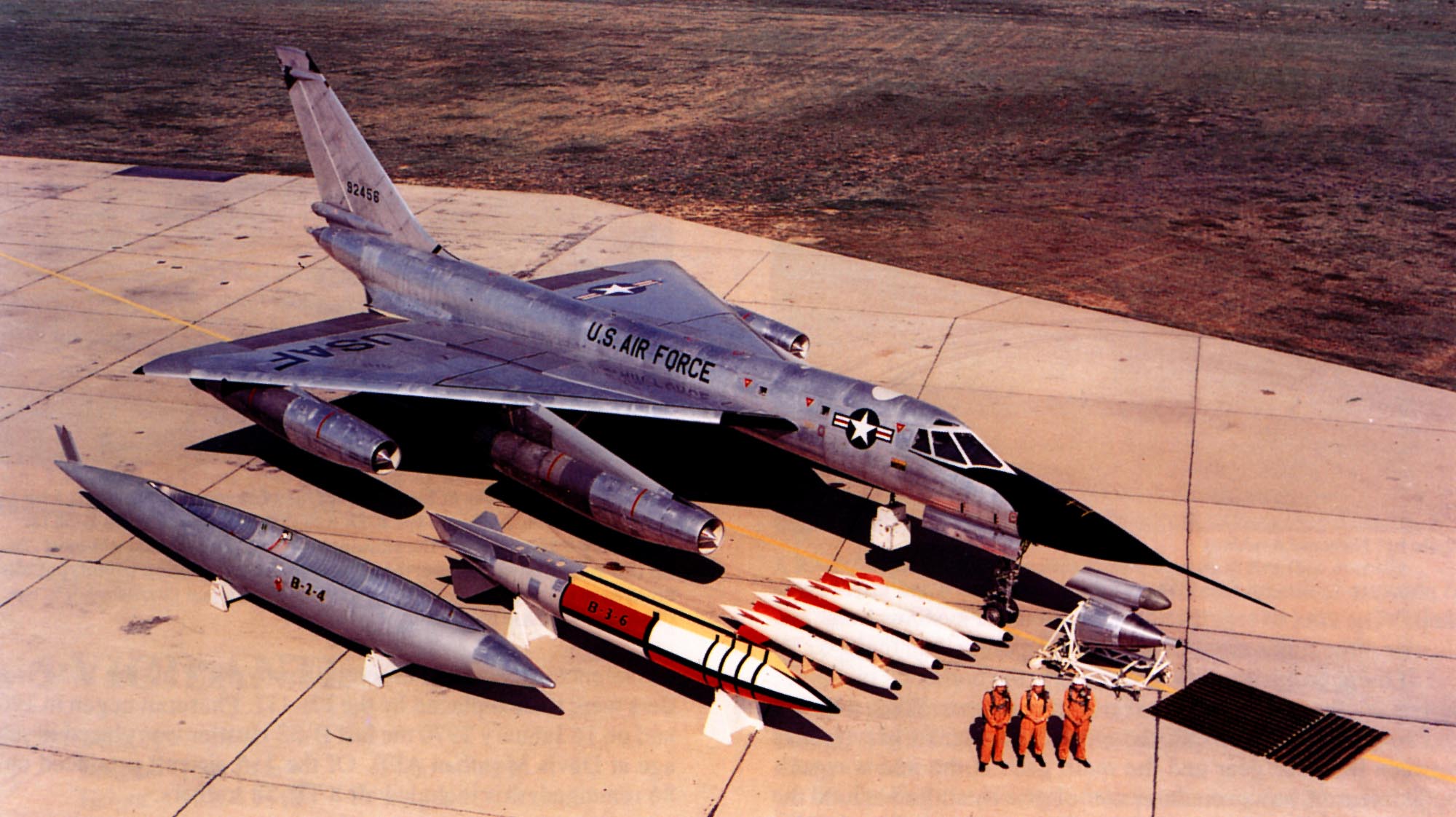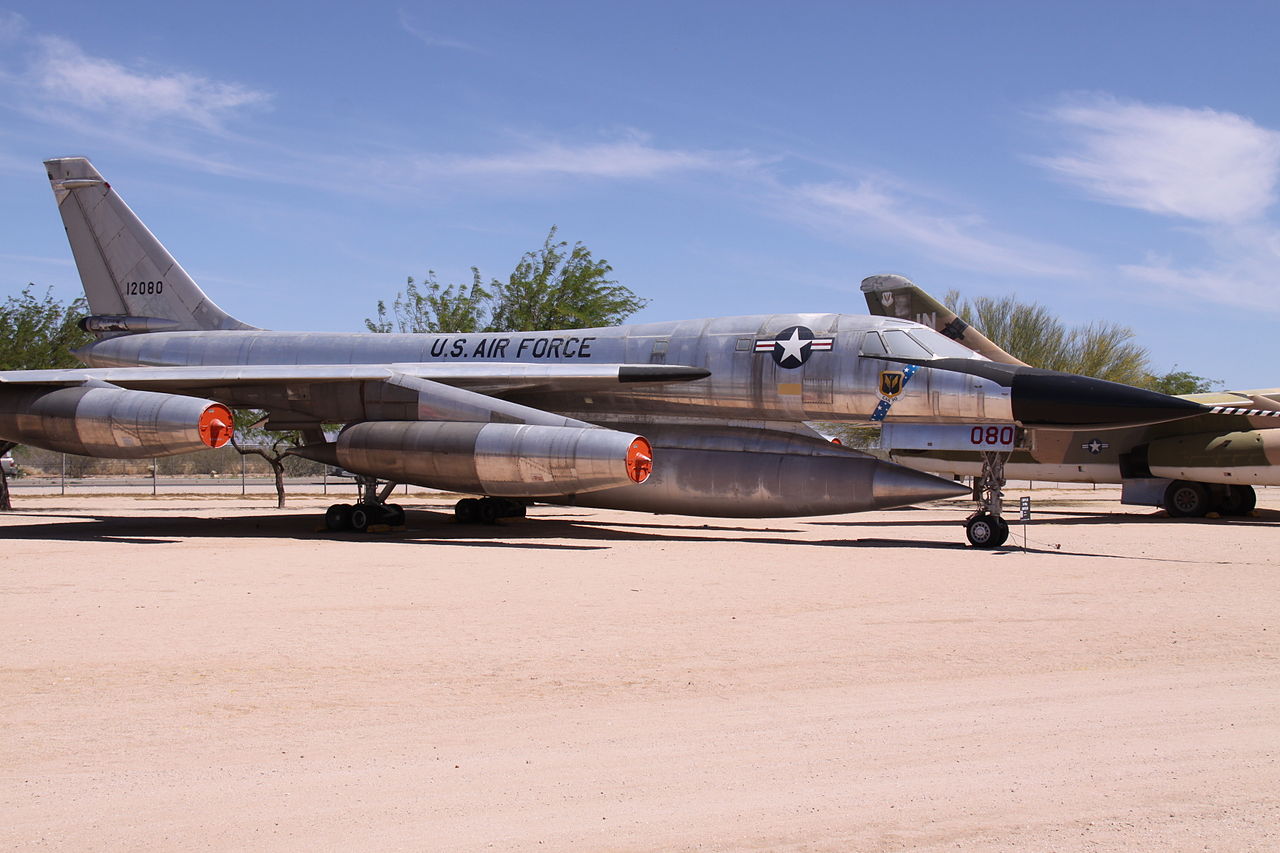

The B-58 Hustler was a high-altitude Mach 2 strategic bomber which served with the United States Air Force from 1960 to 1970. It was crewed by a pilot, navigator/bombardier and a defensive systems operator, located in individual cockpits. The aircraft is a delta-winged configuration similar to the Convair F-102A Delta Dagger and F-106 Delta Dart supersonic interceptors.
The Hustler is 96 feet, 10 inches (29.515 meters) long, with a wing span of 56 feet, 10 inches (17.323 meters) and an overall height of 31 feet 5 inches (9.576 meters). The fuselage incorporates the “area rule” which resulted in a “wasp waist” or “Coke bottle” shape for a significant reduction in aerodynamic drag. The airplane’s only control surfaces are two “elevons” and a rudder, and there are no flaps.
The B-58’s delta wing has a total area of 1,542.5 square feet (143.3 square meters) and the leading edges are swept back at a 60° angle. The wing has an angle of incidence of 3° and 2° 14′ dihedral (outboard of Sta. 56.5).
The B-58A had an empty weight of 51,061 pounds (23161 kilograms), or 53,581 pounds (24,304 kilograms) with the MB-1 pod. The maximum takeoff weight was 158,000 pounds (71,668 kilograms).

The bomber had a cruise speed of 544 knots (626 miles per hour/1,007 kilometers per hour) and a maximum speed of 1,147 knots (1,320 miles per hour/2,124 kilometers per hour) at 67,000 feet (20,422 meters). The B-58A had a combat radius of 4,225 nautical miles (4,862 statute miles/7,825 kilometers). Its maximum ferry range was 8,416 nautical miles (9,685 statute miles/15,586 kilometers).

The B-58 weapons load was a combination of Mark 39, B43 or B61 thermonuclear bombs. The weapons could be carried in a jettisonable centerline pod, which also carried fuel. The four of the smaller bombs could be carried on underwing hardpoints. There was a General Electric M61 20 mm rotary cannon mounted in the tail, with 1,200 rounds of ammunition, and controlled by the Defensive Systems Officer.
The B-58 weapons load was a combination of W-39, B43 or B61 nuclear bombs. The W-39 warhead was carried in the jettisonable centerline pod, which also carried fuel. The smaller bombs could be carried on underwing hardpoints. There was a defensive 20 mm M61 rotary cannon mounted in the tail, with 1,040 rounds of ammunition and controlled by the Defensive Systems Officer.

© 2018, Bryan R. Swopes